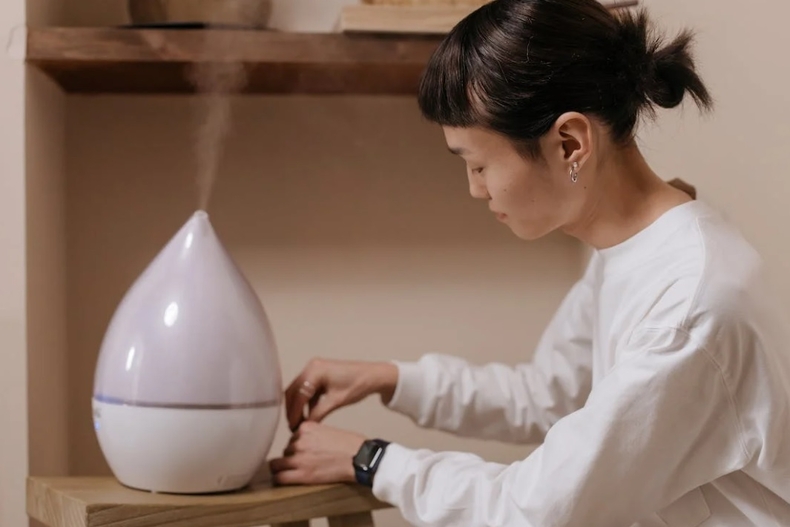
As winter approaches, it is essential to find ways to save on heating costs. Here are some methods to consider:
1. Adjusting Faucet Direction after Hot Water Use:
After using hot water, turning the faucet towards the cold water side can prevent unnecessary circulation in the boiler, which constantly heats water. This circulation can contribute to higher heating costs. Therefore, it is advisable to turn the faucet towards the cold water side after using hot water, reducing the need for continuous water heating. Additionally, lowering the hot water temperature setting can further decrease energy consumption.
2. Maintain an Optimal Indoor Temperature:
Keeping the indoor temperature between 18-20 degrees Celsius during winter is recommended. Exceeding this range can lower the body's adaptability due to the temperature difference between indoors and outdoors, potentially harming health. Even a modest reduction in indoor temperature, from 23 to 20 degrees Celsius, can result in approximately 20% savings on heating costs.
3. Utilize the 'Away' Function on the Boiler:
When using a boiler, activating the 'Away' function while leaving the house can be beneficial. This feature supplies minimum operation of the boiler when you are away. If you turn off the boiler and go out, it requires high energy consumption to reheat a cooled interior upon your return. For outings lasting less than 10 hours, using the 'Away' function can contribute to saving on heating costs.
4. Regulate Indoor Humidity with a Humidifier:
Cold winter heating often leads to dry indoor air. Dry and warm air not only affects the immune system but also reduces heating efficiency. Using a humidifier to increase indoor humidity helps improve air circulation, eliminate dryness, and consequently, reduce heating costs. However, it is essential to balance humidity levels to avoid mold growth and maintain air quality by periodically ventilating the space.
5. Optimize Clothing and Insulation:
Adjusting indoor heating to a comfortable level and using heating accessories like thermal socks, pajamas, and undergarments can enhance perceived warmth, allowing for lower thermostat settings and promoting health. Additionally, proper insulation is crucial. Installing insulation materials such as thermal air caps on window frames, double curtains, window insulation films, and rugs on the floor can minimize heat loss, contributing to energy savings in heating costs.
(한국어 번역)
한국다문화뉴스 = 심민정 기자ㅣ겨울철 난방비를 절약하는 방법은 무엇이 있을까? 먼저 온수 사용 후 냉수 쪽으로 수도꼭지 돌리는 방법이 있다. 온수를 쓰고 난 뒤 온수 방향으로 수도꼭지를 두게 된다면 보일러는 물을 계속해서 데우기 위해 불필요한 공회전이 일어나게 된다. 이는 높은 난방비의 원인이 될 수 있다. 그러므로 물을 다 사용한 뒤에는 되도록 온수 쪽이 아닌 냉수 쪽으로 방향을 돌려놓는 편이 좋다. 그리고 온수 온도를 낮게 설정하면 에너지 소비를 줄일 수 있다.
둘째, 겨울철에는 실내 적정 온도를 18~20도로 유지하는 것이 좋다. 이 이상 온도를 높이게 되면 실내외 온도 차로 인해 인체 적응력이 떨어져 오히려 건강에 해롭다. 실내 온도를 23도에서 20도로 3도만 낮춰도 약 20%로의 난방비를 절약할 수 있다.
셋째, 보일러를 사용할 때 ‘외출’ 기능을 사용하는 것이다. 해당 기능은 외출 시 보일러를 끄고 외출할 때 사용하는 기능이다. 보일러를 꺼둔 상태로 외출 후 귀가했다면, 다시 차가워진 실내를 데우기 위해 많은 에너지가 소모된다. 따라서 10시간 이내로 돌아오는 외출의 경우 외출 기능을 켜 놓은 상태로 외출하는 것이 난방비 절감에 도움이 된다.
넷째, 가습기를 활용하여 건조한 실내를 조절하는 것이다. 추운 겨울 난방 시 실내가 쉽게 건조해진다. 덥고 건조한 공기는 인체 면역력뿐 아니라, 난방 효율도 떨어뜨린다. 이럴경우 가습기를 활용하여 실내 습도를 높여주면, 공기 순환이 원활해지고 건조함도 사라지게 되어 난방비도 절감할 수 있다. 그러나 습도를 너무 높게 유지할 경우 집안 내 곰팡이가 생길 수 있고 공기가 탁해질 수 있으니, 중간마다 환기를 시켜 습도를 조절하는 것이 중요하다.
또 실내 난방온도를 적정 수준으로 맞추며 수면양말과 수면바지, 내복 등 난방용품을 함께 사용하는 것이 좋다. 난방용품을 사용하면 체감온도를 약 2.2도 높일 수 있어 난방비 절약과 더불어 건강에도 좋다. 난방용품뿐 아니라 단열도 중요하다. 창틀에 일명 ‘뽁뽁이’로 불리는 단열 에어캡을 설치하거나 이중커튼, 창문 단열 필름 등을 설치하고 러그 등을 바닥에 깔아주면 열 손실을 줄여 난방비를 절감할 수 있다.

